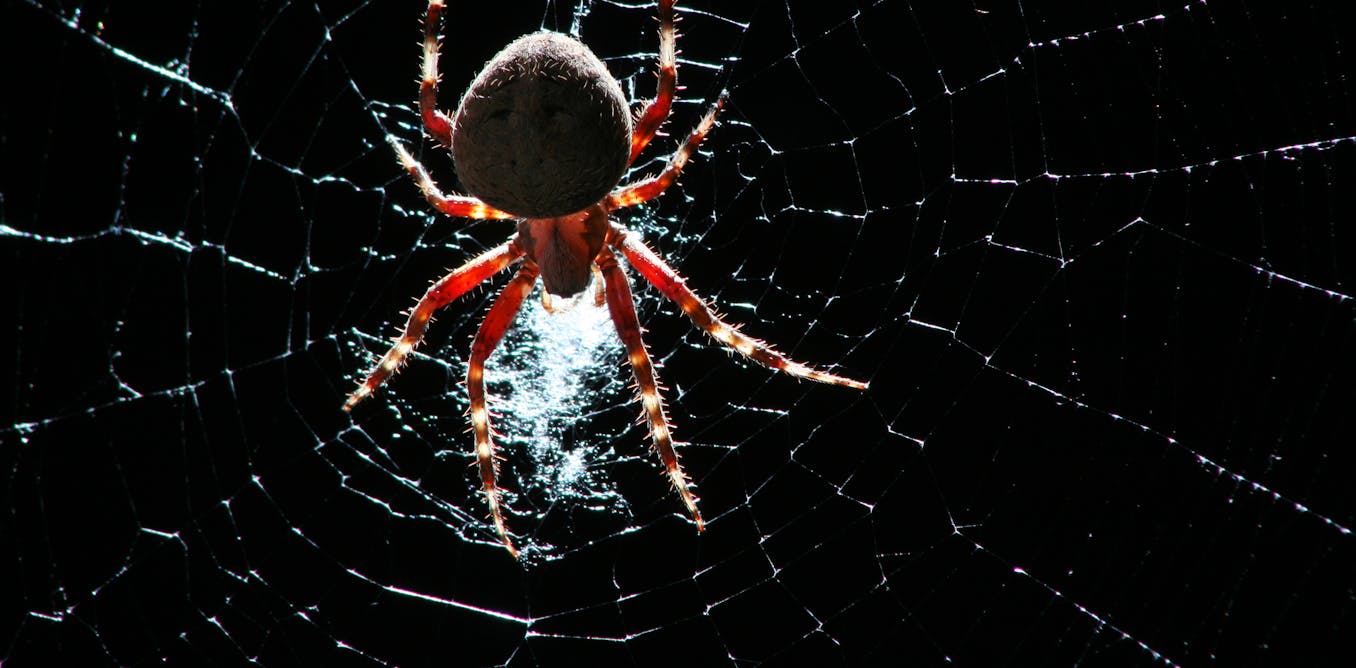STUNG by a KILLER BEE!
Stung by a killer bee is a thrilling and informative video that takes viewers on a journey into the world of beekeeping and the genetic reprogramming of aggressive Africanized honeybee colonies. The video follows the host as he works alongside a beekeeper to determine if a colony has successfully been reprogrammed into docile European stock. The host encounters a swarm of bees and is stung while examining the colony, but remains calm and continues his work. The video provides valuable information about the nature of killer bees and the dangers of their stings, as well as how to properly treat a bee sting. Viewers also learn about the important role of honeybees in pollination and honey production. This engaging and eye-opening video is a must-watch for anyone interested in beekeeping, conservation, or simply learning more about these fascinating insects. And be sure to stay tuned till the end for valuable tips on treating bee stings.
Watch the video by Brave Wilderness
– Whoa… that’s a lot of bees right there. And what I’m creating is a little bit of space, bee-space, so I can get into the center frame and determine what the health of the colony looks like. OW! OH! OH! OH! OH! OH! OH! I’M STUNG! STUNG! STUNG! STUNG! OW! This episode is sponsored by Sting-Kill. Killer bees. It’s a term that swarmed the United States in the early nineties. Blanketing the nation, with a a fear that being covered and stung to death by Africanized honeybees was a possible, very painful doom. And while people do die from bee stings every year, due to rare allergic reactions,
The term “Killer Bee” is nothing more than an overly-hyped media headline. Early morning…the deserts of Arizona. Today, we are out in a bee yard, getting ready to check some hives to determine if they had been reprogrammed from angry Africanized killer bees and into any more docile stock.
You would never want to approach a colony of bees in the wild. So today, I will be working alongside my good friend, honeybee farmer and conservationist, Chris Brinton. This guy. Knows. Bees. Chris has dedicated his life to honeybee conservation. By safely capturing aggressive Africanized colonies, and genetically reprogramming them into calm European colonies. The easiest way to explain it, is that he removes the angry Africanized queen from the hive and replaces her with a friendly European queen. Eventually, the friendly queen’s genetics are passed on.
The colony, becomes docile and ultimately safer for a honey farmer to work with. This process takes time, but it’s incredibly effective. Today… Chris has tasked me with analyzing the aggression level of an Africanized bee colony, that was recently discovered in a residential neighborhood. Instead of exterminating the colony,
Chris moved it to one of his controlled bee yards, and swapped the queens, so the genetic reprogramming process could begin. Has the genetic reprogramming process worked? We’re about to find out. Now this bee box here is unique, in that this was an Africanized colony that’s been brought into the bee yard. And what Chris has done, is replaced the queen. Remember, at one point, this was considered Africanized killer bees, which are incredibly aggressive, if provoked. (strong exhale) Alright, here we go.
So the first thing, is to gently pry open the lid and that is to crack the seal between the wax and the frames. Whoa! That’s a lot of bees right there. So far, so good. They seem to be pretty calm. I want to create myself a little bit of space,
By separating out this first frame, from the others. Then, as Chris had instructed me, I want to get down to about the sixth frame. That’s right in the center of the colony. Alright…coming straight up. Here we go. Wow! Look at that! That is a VERY heavy frame of comb and bees.
And as you can see, we’re starting to get pretty swarm-y here. I’m gonna set this frame off to the side. Before we get any further, it’s important that we understand what a killer bee is. Technically, they’re swarms of European bees who interbred with invasive East African Lowland bees. This breeding created aggressive swarms
Of what are now known as Africanized bees. Visually, there’s very little difference between these bee types. The danger, is that Africanized bees are far more aggressive and react faster to perceived threats. The sting of a killer or Africanized bee, isn’t more potent than that of a European bee,
But because they attack in greater numbers, this equates to more stings and the chance of death. Hence the nickname, “killer” bee. Really careful here… don’t want to squish anybody. Middle frame is coming up. OW! OH! OH! OH! OH! OH! OH! OW! I’M STUNG! STUNG! STUNG! STUNG! OW! All the way…I…I…my glove has gotten peeled back. Okay. That’s one of the dangerous elements of beekeeping is you always gotta be careful of the bees getting up in underneath the gloves and your suit. YOWZERS!
Yep! Gotta love honeybee stings. Okay. AH! WOW! Honeybee stings! More potent than you would think! Okay. Let me bring out this frame. Alright, here we go, middle frame coming up. WOO! Look at that! That is a lot of bees right there. Let me check one more frame back. Alright, next frame coming up. That is a lot of healthy looking bees right there. At this point, we are pretty much stuck right in a swarm of bees. Now, if I were to gauge the level of aggression that is happening, right here, I’d say it’s somewhere right in between, not necessarily as aggressive as you would imagine a swarm of killer bees to be,
Which tells me that this queen is doing her job. She is successfully reprogramming a lot of this colony into being more docile. Now, I was stung once in the process, but, really that was sort of my own fault. My bee suit came peeled back from my gloves and I was inadvertently stung,
But…I’m NOT getting attacked to the point where the bees are latching onto me and inflicting a bunch of stings. So THAT is actually a really, really good thing. That means that this colony, is on its way, to being genetically reprogrammed and will ultimately be a more friendly,
Docile stock of bees for producing honey. Alright. I would say, the colony looks healthy. So now it’s a matter of getting the frames back into place and closing up the box. It’s definitely intimidating to be surrounded by this many bees. That’s without question, but, if you think about it. beekeepers are doing this every single day
To help with the production of honey. And you’re going to get stung every once in a while. It’s inevitable. Okay. So now that we’ve got the frames back in place, I want to make sure that they are balanced and even. I want to gently move the bees away
From the edge of the box. Make sure they’re all kind of tucked back down in there. I don’t want anybody to get squished, and last, but not least, we put the lid back on. You want to do it at a little bit of angle, so that you can kind of
Push any last bees out of the way… really gently… and viola! There we go! It’s important to remember that all bees are going to defend their colony. Out in the wild, if there were to be a bear that comes into the environment and tries to break into a hive, to get honey.
The bees sting as a natural defense to ward off anything that’s either after their queen, or after their production of honey. So it’s not abnormal for the bees to be swarming around me. The good sign, is that the bees are not aggressively attacking. And that’s a day in the life of a beekeeper.
Now, it’s time to treat that sting. During the summer months, stings most commonly occur when humans accidentally step on a honeybee that is pollinating a flowering plant. Now before we get to treating the sting, here are a few things you should know. First, is that only female bees can sting. Now it’s obvious the stinger is very sharp,
But did you know that unlike wasps and hornets, honeybee stingers are barbed? And as a result, they become lodged in their victim’s skin, which can allow for a larger dose of venom. The venom itself is made up of mostly water, and the following proteins. Simply put, it’s a chemical cocktail that causes pain, – OW! – swelling, itching, and an extreme level of discomfort that can be thought of as nature’s way to teach you a lesson that you will never forget. So now it’s time to show you how to properly treat a bee sting.
The first thing you want to do is be brave and stay calm. Pay attention to how your body is reacting. If you notice that the swelling is getting really extreme, really quickly, or you start having trouble breathing, it feels like your throat is swelling up. That means you’re having an allergic reaction.
So you want to seek medical attention as quickly as possible. In most instances, it’s just going to be a little localized pain and swelling. Exactly like what I’m going through right now. Now in my arm, we still have a stinger lodged into the skin. And the best way to remove a bee stinger,
Is to simply slide it out with the edge of your fingernail. Wow! That was really in there. And there you have it. Right now it’s in my finger there. I don’t know if you could see that. That is a pretty long, sharp, needle-like stinger. Now, IF you are at home,
And you have access to soap and water, it’s always best to wash off the sting site thoroughly before you go forward with any further medical treatment. Now, one thing that I always have in my first aid kit, is Sting-Kill. One of my absolute favorite products.
And Sting-Kill comes in a number of different forms, including Sting-Kill Wipes. These are fantastic. And then of course, the neon green Sting-Kill vials. These are my favorites. Now what I’m going to use first is one of the wipes. You could see this as just a little bit of gauze
Soaked in the Sting-Kill formula, which contains benzocaine and menthol. And you want to just gently wipe it over the site. Aw, that is soothing! And the coolness IMMEDIATELY alleviates the sting. And it also just puts a little bit of comfort in your mind to say, okay, there goes that sting.
Now it’s not nearly as painful. And you can see that my arm is quite swollen. All in this area, the skin is taut. And that’s perfect. Now if your sting is still bugging you, you can go all the way to the vial. Now it’s in a little plastic capsule.
And all you need to do is peel that out of its packaging. And the actual serum itself, is encased in glass and plastic. And what you want to do, is squeeze the plastic to crack the glass and then just shake it up. And eventually that’s going to work itself
Down into the gauze pad… just like that. And you want to apply it directly to the sting zone. Oh yeah! That is instant, cooling relief. Now you want to sit back, relax in a nice, calm, cool environment. Maybe even have a Popsicle, watch your favorite TV show,
Or maybe some Brave Wilderness episodes on YouTube. and pay attention to the swelling. Pay attention to your personal symptoms. And if you feel like the reaction is getting worse, I do recommend seeking medical attention. But for the most part, a honey bee sting is going to be nothing more
Than a painful situation that’s going to last for a short amount of time. Then you can say to yourself, “Hey! Just like Coyote, I have entered the Sting Zone.” You’re going to have a great story to tell. Well, I’d say that today was incredibly educational. We got to take a look
At a Killer bee swarm, that is being genetically reprogrammed and is becoming a more docile colony for the production of honey. And, you’ll learn what to do, if you get stung this summer by a honeybee. I’m Coyote Peterson. Be brave. Stay wild. We’ll see you on the next adventure. The threat of being swarmed, and stung to death by killer bees, is NOT something you need to worry about this summer. And if it makes you feel even better, to date, Chris has captured thousands of aggressive killer bee swarms and once introduced to a docile European queen,
Every single colony has been successfully reprogrammed. It’s important to remember that honeybees are not out to get you. They simply want to be left alone, to do their job pollinating our planet, which ultimately helps in the production of many foods we eat yet. Yet accidental stings do happen.
So if you find yourself facing the uncomfortably potent venom of a honeybee, just remember…be brave and stay calm, because the first aid is quick and simple. When it comes to killing the sting, nothing beats Sting-Kill. For more information on Sting-Kill’s products, or where to get them,
Make sure to visit their website by clicking on the link in the video description below.
About Brave Wilderness
The Brave Wilderness Channel is your one stop connection to a wild world of adventure and amazing up close animal encounters!
Video “STUNG by a KILLER BEE!” was uploaded on 06/19/2021 to Youtube Channel Brave Wilderness



































